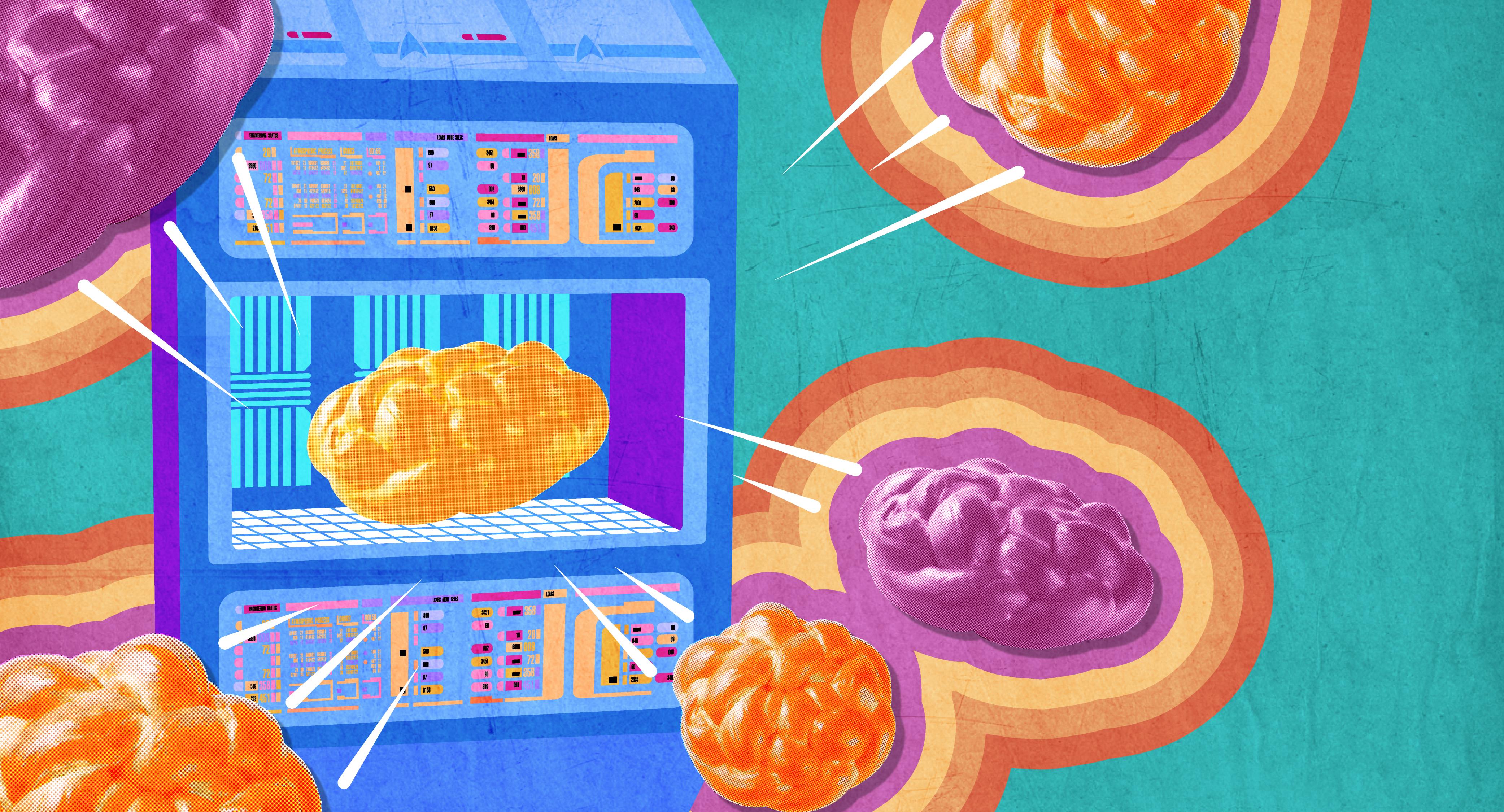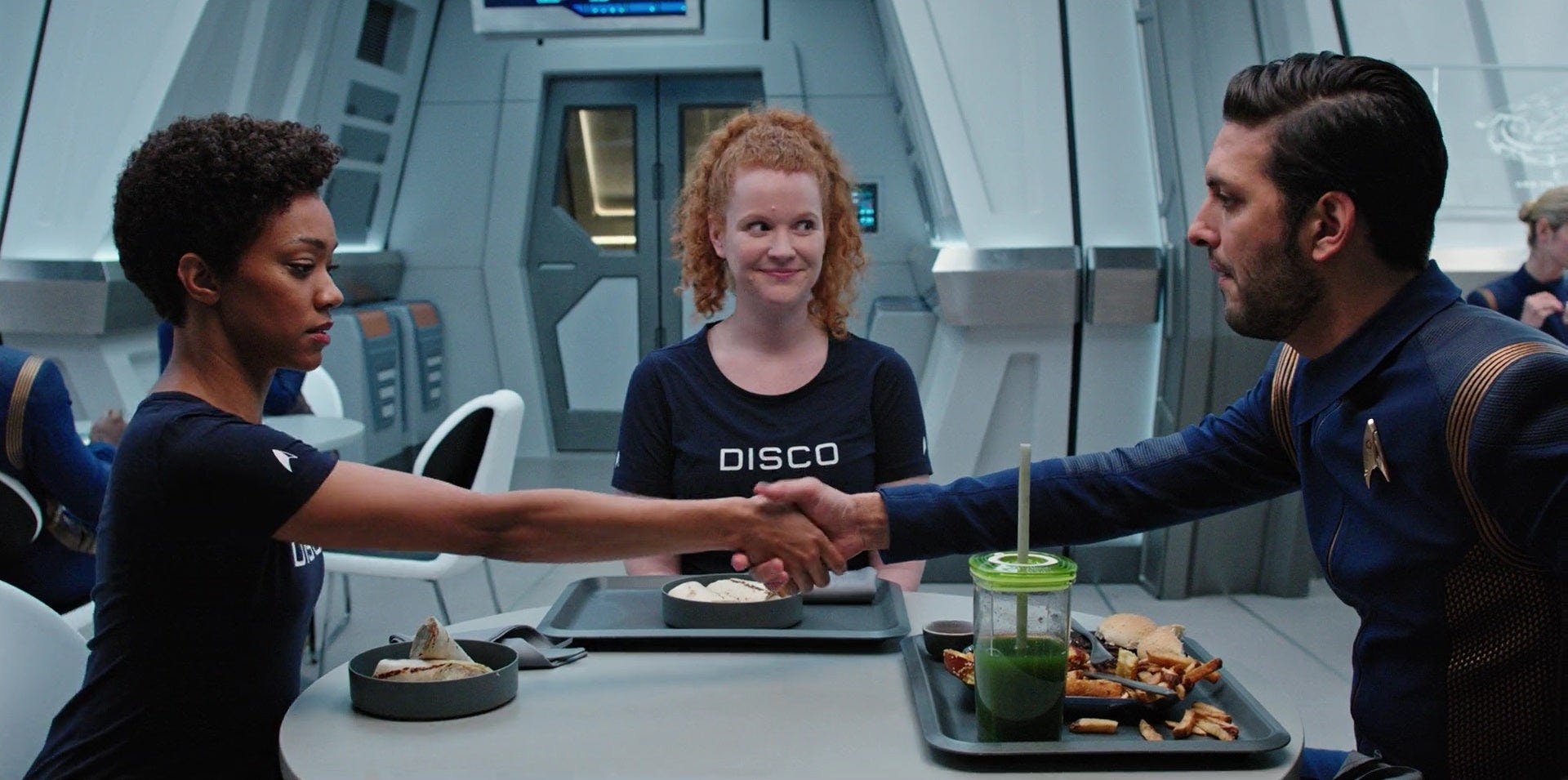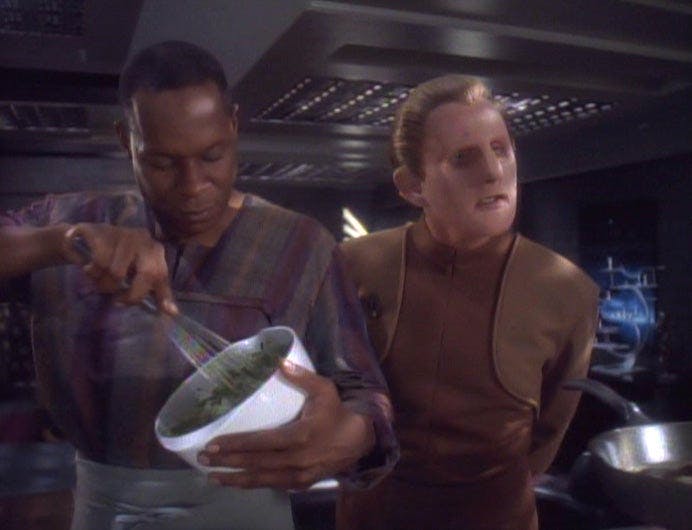Published Sep 7, 2021
A (Replicated) Rosh Hashanah Seder
How to keep traditions alive in Star Trek's future

StarTrek.com | Getty Images
As soon as the air starts turning crisp, I know — it’s time for apples and honey. As September rolls around, you can catch me digging through the pantry to find the bottle of liquid honey I know must be in there somewhere, going out to pick the perfectly sour-crisp crabapples from the tree in the backyard, and inviting everyone around me to share in one of the simplest and most delicious Ashkenazi Jewish food traditions.
Apples and honey are a classic for Rosh Hashanah, the Jewish new year, and this treat has been a part of my life for as long as I can remember.
But had I grown up on a starship, what would I think about apples and honey? Would I even think about them at all in the context of my family, childhood memories, and Jewish culture? I’m not so sure.

StarTrek.com
In the Star Trek future, having most — if not all — food come from replicators would naturally change the ways we interact with our meals. And sure, dinnertime might not look too different — if I were preparing a Rosh Hashanah seder on a starship, I could serve functionally the same menu I would make on earth here and now. But a seder isn’t just about the food, or even the food and the people who gather to come and eat it. The reasons why any particular dish is served in this way at this place and on this day ties into deeper stories about culture and generational knowledge.
When my elementary school had a multicultural event, where we were supposed to bring a dish to represent our family background, my mom took me over to my great-aunt Mitzi’s house to make kugel. Even though I don’t have her recipe anymore, I still have vague fond memories of that day in the kitchen. Kugel wasn’t on the rotation of dishes we made and ate at home, so when I make it now there’s always a part of me that’s thinking of Aunt Mitzi, and how I learned that the passing down of food through generations in my family mattered.
In Star Trek, the show repeatedly establishes that many people don’t learn to cook — and in The Next Generation episode “Final Mission,” it’s shown that some smaller ships don’t even carry food and water supplies because they rely on their replicators to synthesize what they need.
And while there are plenty of people on Earth today who don’t or can’t cook, abandoning that knowledge and those practices on such a large scale by replacing kitchens with replicators would be a tragic cultural loss for our entire species.
Now, I’m not fundamentally anti-replicator. I’m in favor of any ethical practice that can reduce food scarcity to a problem of the distant past, and I like my out-of-season foods as much as anybody. In space, replicators might help some people keep their food traditions alive because the technology doesn’t rely on having specific climates, growing conditions or planet surfaces to make the food appear. In a largely post-scarcity world, people who might not have otherwise been able to afford certain traditional foods are empowered to partake in meals and celebrations that would have been perpetually out of reach. And cutting down the time needed to prepare a meal can be an equalizing factor when it comes to domestic divisions of labor.
But I think over-reliance on replicators could be a dangerous thing. First, from a practical point of view, technology fails. Power gets rationed. Food stores run low and need to be replaced with local ingredients. No one demonstrates the value of a cook on a starship better than Voyager’s Neelix — despite the frequent complaints about his food, without his knowledge and skill with a skillet, the crew would have been in real trouble. And we learn a great deal about him — and the Voyager crew — from the dishes he served up. Neelix often tried to marry his own knowledge with the crew’s favorites from home, creating fusions (or mishmashes) with the ingredients he had on hand. And Voyager’s suddenly non-Federation and scarcity-based food culture affects everybody’s life on board — and who knows? Just like Ashkenazi Jewish recipes created in conditions of Eastern European scarcity gave us a surfeit of delicious potato-and-onion-based foods, maybe a few of Neelix’s creations survived long after the crew returned to Federation space.

StarTrek.com
But relying entirely on replicators also robs us of the act of learning. I remember my first time making challah in college — we were doing a sweet challah to celebrate the new year, and my friends and I were clumsily braiding the loaves into a round pattern. Even now, I think about the physical act of making that bread as one of my formative religious experiences. Because, on the surface level, I was learning an awesome new recipe. But really, I was learning about why Rosh Hashanah challah is different from regular challah — it represents the cycle of the year, it represents a crown, the shape and the sweetness make it stand out as something special and amazing to mark this moment in time — and through that, learning how to think more deeply about Jewish culture. But really, really I was learning how to form Jewish traditions with a group of close friends that I could build into my own practice going forward. And above all, I was taking an opportunity to revel in a culture that I want to celebrate and share for generations to come.
With a replicator, I would have simply pressed a button and had some delicious bread. That wouldn’t necessarily be a bad outcome, but I would have missed out on a lot.
Replicators open up so many possibilities — for good and ill — when it comes to future cultural food traditions. I wonder, what would a replicator make of a crypto-Jewish dessert recipe that was specifically invented to look like pork chops so the family eating it appeared to not be keeping kosher. Would it bother preserving the once all-important look of the dish? Would the person ordering it even know to care? Or, what would it take for a replicator to be certified as kosher? Would observant Jewish crew members need access to separate replicators for milk and meat products, even if none of the food came from an animal?

StarTrek.com
For my own part, I’ll be sharing Rosh Hashanah dinner with my non-Jewish housemates this year, so I’m looking forward to introducing them to all my favorite dishes. Since I started my countdown to the holiday, I’ve been comparing brisket techniques, practicing my challah braiding, and learning to make honey cake - and I will enjoy every moment of doing this all by hand with a wooden spoon and a recipe book to guide me. But I might use the microwave … possibly a pressure cooker ... and the food processor … and all sorts of tools my ancestors from a few generations ago would never have dreamed of when they prepared their seders.
All that to say, cooking traditional Jewish foods might involve a lot of cutting and drying, but envisioning how these traditions will persist, transform and thrive in the future is not so cut-and-dried.
Julia Peterson (she/her) is a queer Jewish journalist currently based in Regina, Saskatchewan. She also writes for INK Magazine, The Carillon, and Reading in Translation, and would give just about anything to have a pet tribble. Find her on Twitter @hark_a_julia.

